What does a landscaper do?
The average landscaping project in a typical domestic garden involves at least 20 very different skillsets. If you’ve ever wondered “what does a landscaper do?” this article is for you.
These are the main skills that the landscaping team at SilverBirch Gardens use on a day to day basis.
- Pricing
- Project Management
- Health and Safety
- Garden Clearance
- Garden Design
- Procurement
- Drainage
- Groundworks
- Carpentry
- Brickwork
- Stonework
- Tiling
- Plumbing
- Electrics
- Soil improvement
- Hedging
- Planting
- Turfing
- Tidying
- Teaching
Pricing landscaping jobs for new clients
Landscaping is a service and part of the service, at least as far as I’m concerned, is to make like a swan. The bits they see are serene whilst beneath the surface, I’m paddling like crazy. Pricing jobs is the bit of my business where that applies more than any other.
I like to take care when pricing a job. You’ll never see me writing an estimate on the back of a fag packet. I consider everything. Materials, labour, machinery hire, fuel for said machines, health and safety provisions –everything. That way neither my clients nor my business will have any nasty surprises part way through the job.
Project Management: Ensuring garden makeovers run smoothly
In some ways, landscaping is much like baking. Preparation needs to be done in the right order otherwise things can go very wrong. Unlike baking though, landscaping also involves unpredictable elements such as the weather. The UK road network isn’t always helpful either. Late deliveries can really challenge a project – best not to get me started on that one!
So when you see your landscaper on the phone, or with head in hands – that’s not time out – it’s figuring out the next step.
Health and Safety: Always mindful
Under CDM regulations most of my clients sign a contract making me responsible for site health and safety. That applies to the landscapers working on site, anyone visiting the site and even anyone walking past. So before I can break the first sod, I need to ensure that all risk assessments and safety provisions are in place and up to date.
Garden Clearance
My Nan always said that sometimes you have to make a mess to clear one up. She was absolutely right!
Taking away overgrown plants, tired lawns and broken slabs is absolutely essential. We clear the decks and start again – just like taking the furniture out of a room before re-decorating. Only in our case it usually involves, a skip, some hard labour and occasionally a mechanical digger.
The SilverBirch Team do their utmost to ensure that as many as possible of the materials that we take off site get recycled.
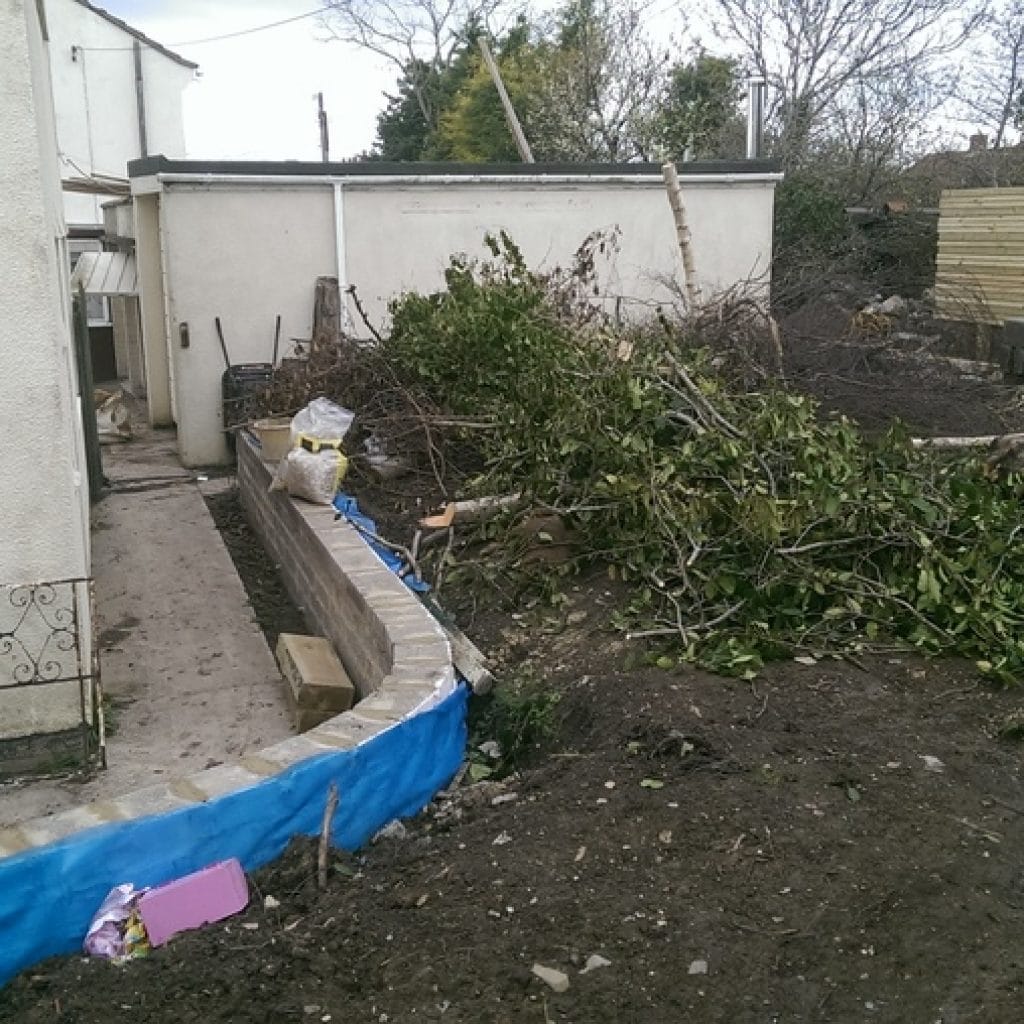
Clearing the decks ready for a garden makeover. These trees will be chipped and recycled into compost.
Garden Design
Not every landscaper is a garden designer. Not every garden designer is a landscaper. The two skillsets are interdependent but different.
At SilverBirch, Dan Richards is a garden designer who landscapes too. And it works, because he’s planning the build as he designs the garden. It’s a great way of improving efficiency and lowering costs.
How the garden design process works
Procurement: Getting materials delivered on time and on budget
Beautiful and unique gardens are made by carefully combining the best quality materials. And when you are going to be living with those materials for a long time, procurement becomes a very precise science.
Rather than nipping to the local garden centre to pick up a few slabs, (which is rarely cost-effective anyway). I’ll gather samples from a range of suppliers and actually bring them to the garden to ensure they match the masonry on the house or existing structures.
Procurement in landscaping is rarely simple. Products need to look great in the garden and fit into the overall budget. In addition to looking good, they need to be delivered bang on time. Few garden makeover sites have room to store materials securely for weeks at a time and a whole project can be delayed by a late delivery.
Drainage: Not cosmetic but a landscaping essential
The sloping gardens, rolling hills and specific soil type in the Somerset gardens I work in, often have challenges with drainage. Number one priority when landscaping a garden is to ensure that the property is not compromised by our work. Number two is to make sure we get the drainage right. Nobody wants a soggy unusable corner in their plot, but neither do they want an arid, sterile garden.
Landscapers also need to be civil engineers!
Groundworks: Making the earth move
Closely linked to drainage and vital when landscaping a sloping garden is re-contouring the space. Modern landscapers are lucky – we can use mini excavators to help shift the soil.
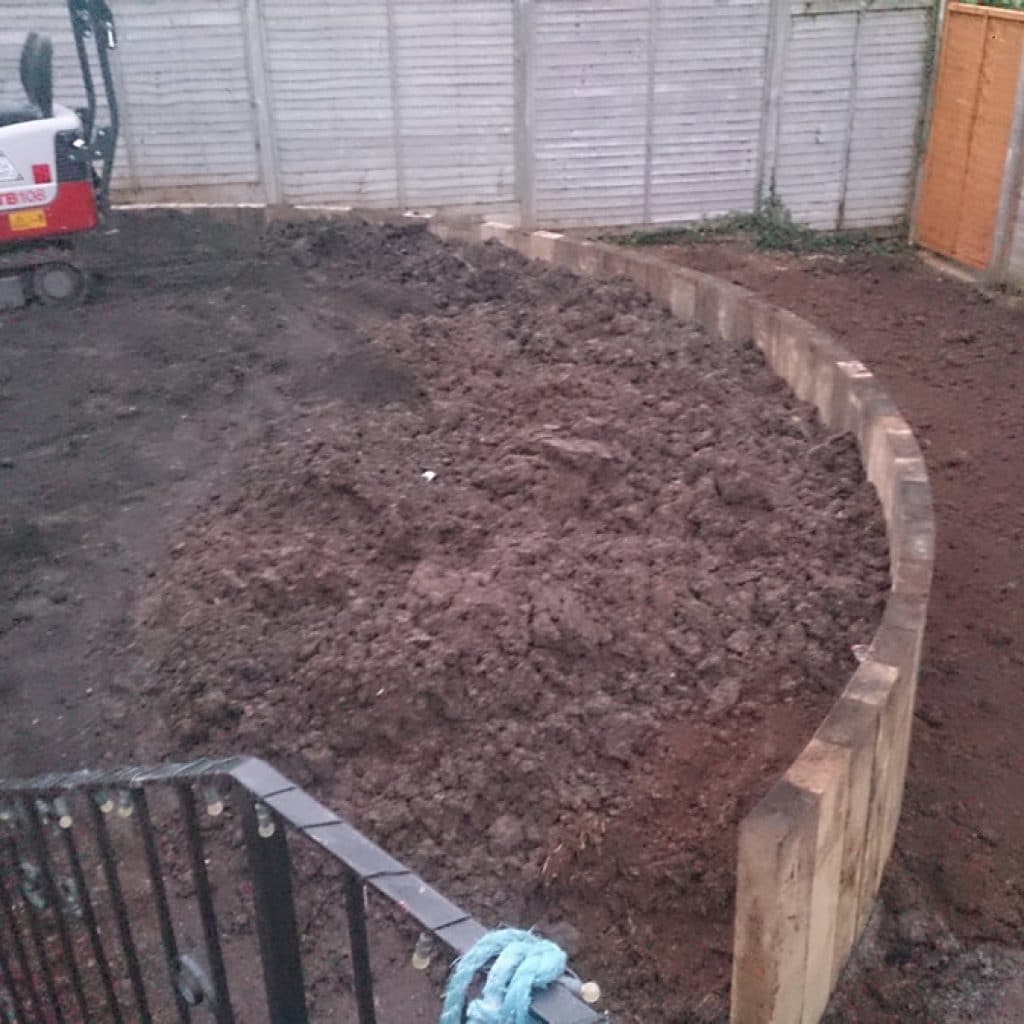
The trick is to make sure that the structure of the soil is protected at all times. We try to spread the weight of any machinery to avoid compacting the soil. It’s also important to never mix topsoil and subsoil. Very few plants would thrive in a garden with poor soil.
Carpentry
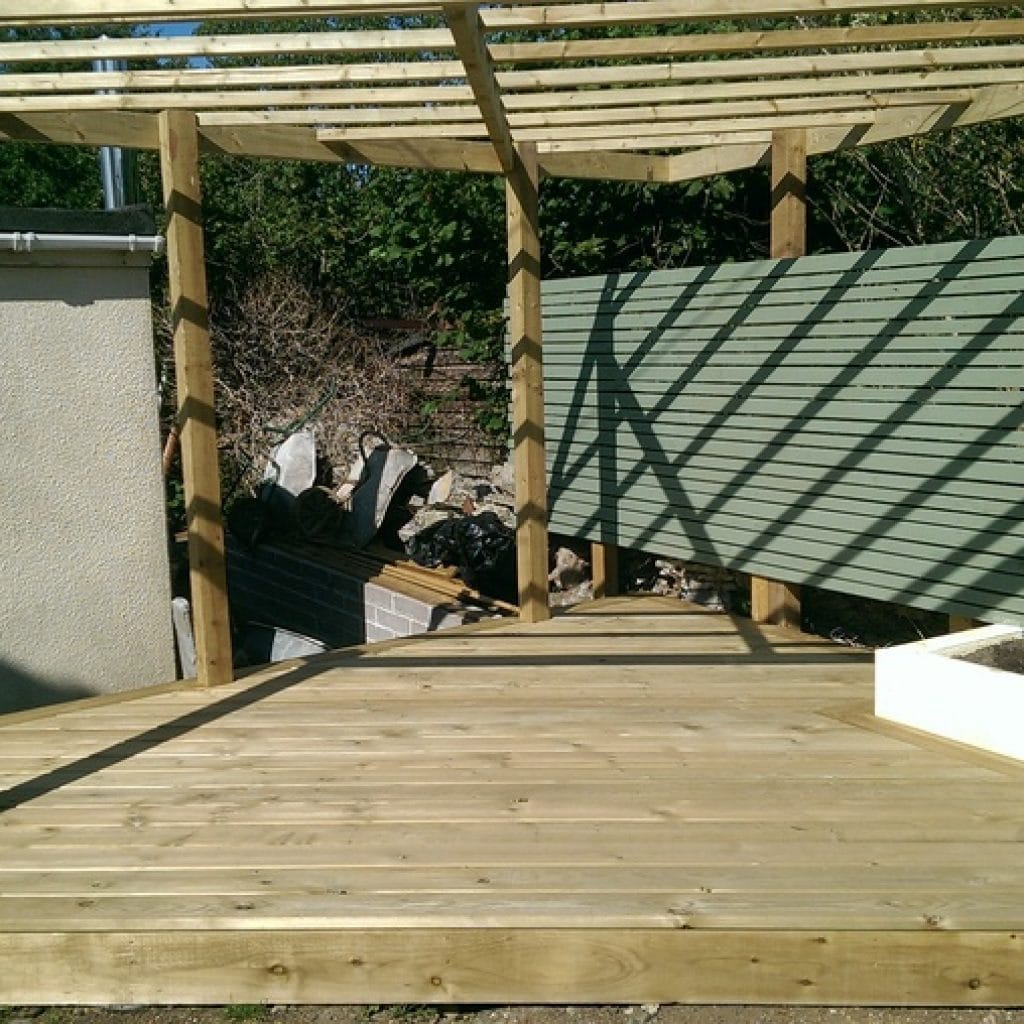
A work in progress. Timber decking beneath a pergola with a modern style wooden fence.
Of all the landscaping skills I’ve learned over the years, carpentry holds a special place in my heart. I just adore using natural materials to fashion structures. In my mind, every garden should include some timber if at all possible.

Its the porcelain paving that really steals the show in this garden but that green oak building is rather special too.
Brickwork
Just like a building, much of the hard landscaping in a garden gets hidden underground. Those retaining walls that turn slopes into terraces all need strong foundations. A garden makeover almost always involves some brickwork.
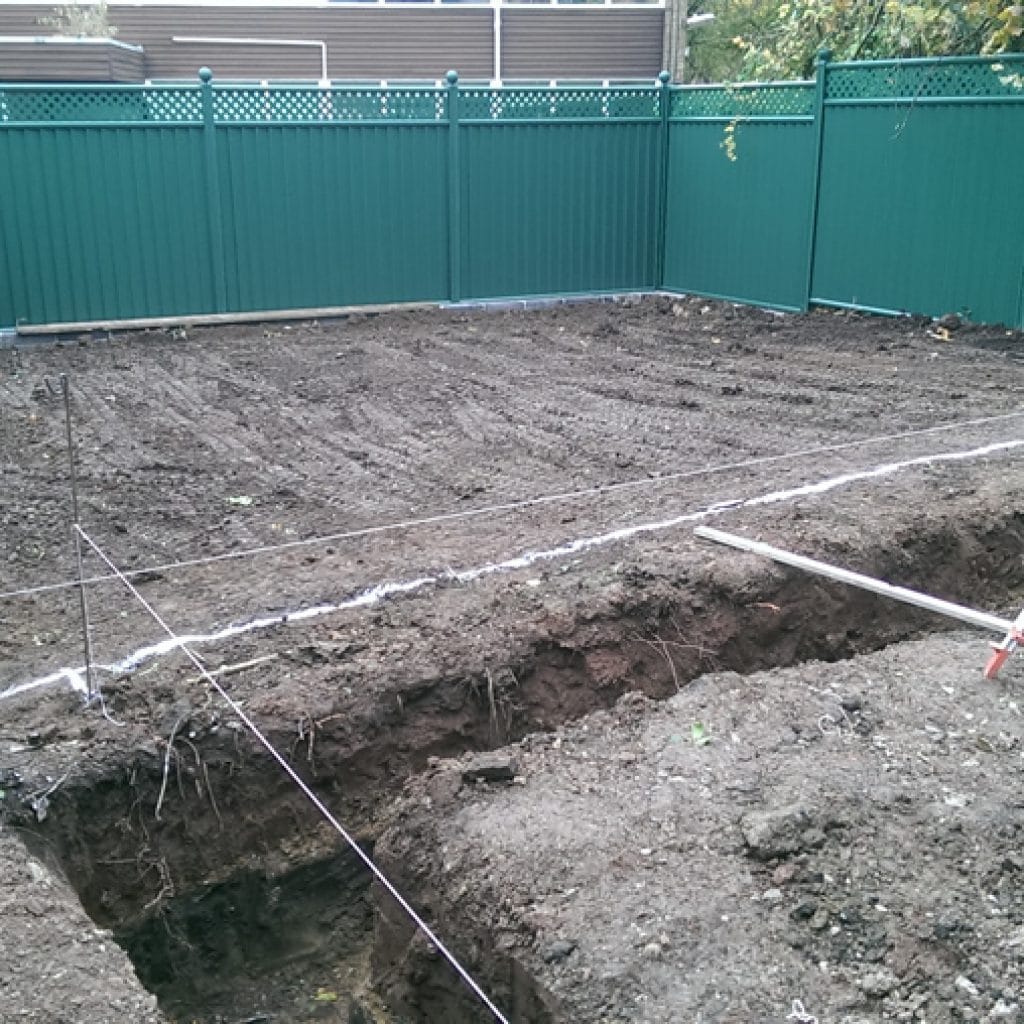
Strong foundations are a must for any permanent garden feature
Interestingly enough, it’s not unusual for folks to join the landscape industry from the construction industry. Carpenters, bricklayers, even electricians just love the creativity involved in building a garden.
Stonework and paving
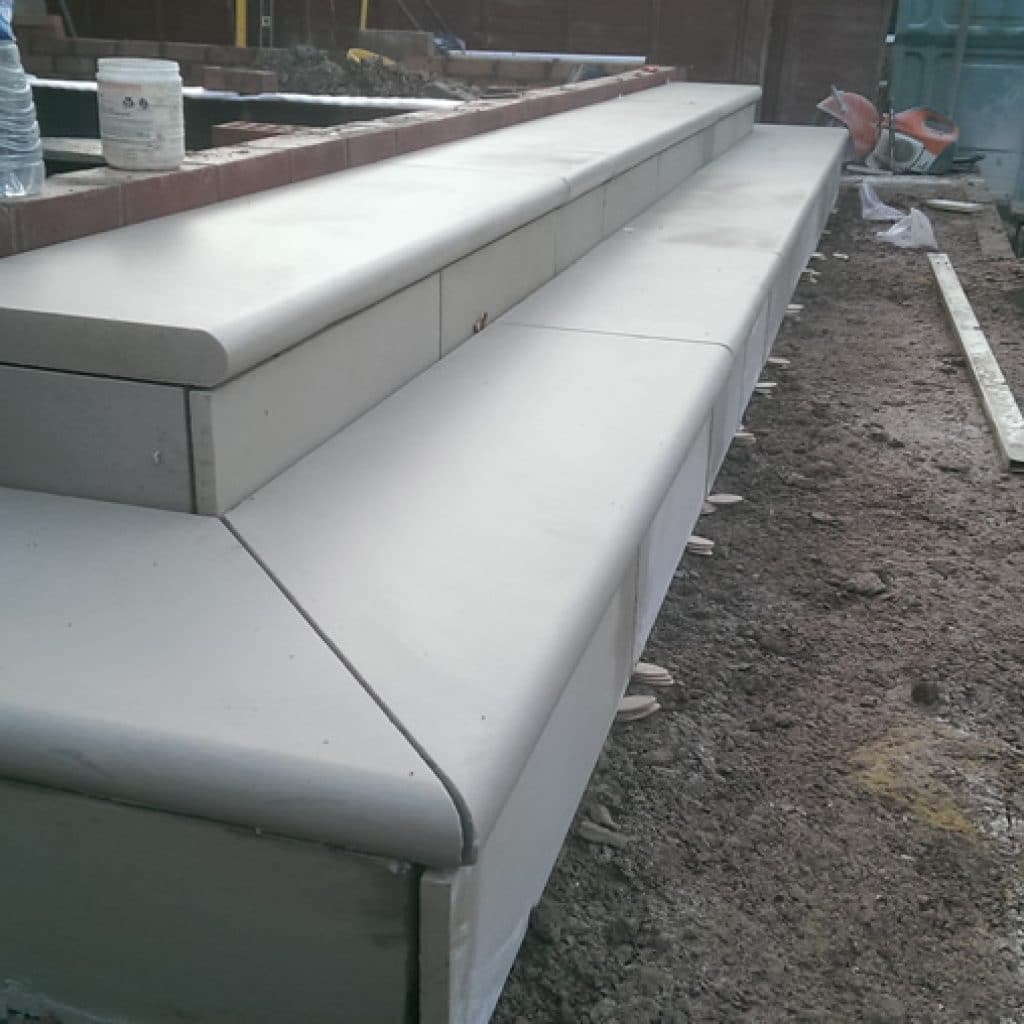
Absolutely my favourite part of hard landscaping. Laying a patio can be hard work. The sub-base needs to be just right, the slabs are heavy and grouting makes my back ache. I’ve blackened many a fingernail whilst laying pavers but I wouldn’t change a thing and I think that many landscapers would agree.
The level of satisfaction when you step back and view freshly laid paving makes everything worth it.
Tiling
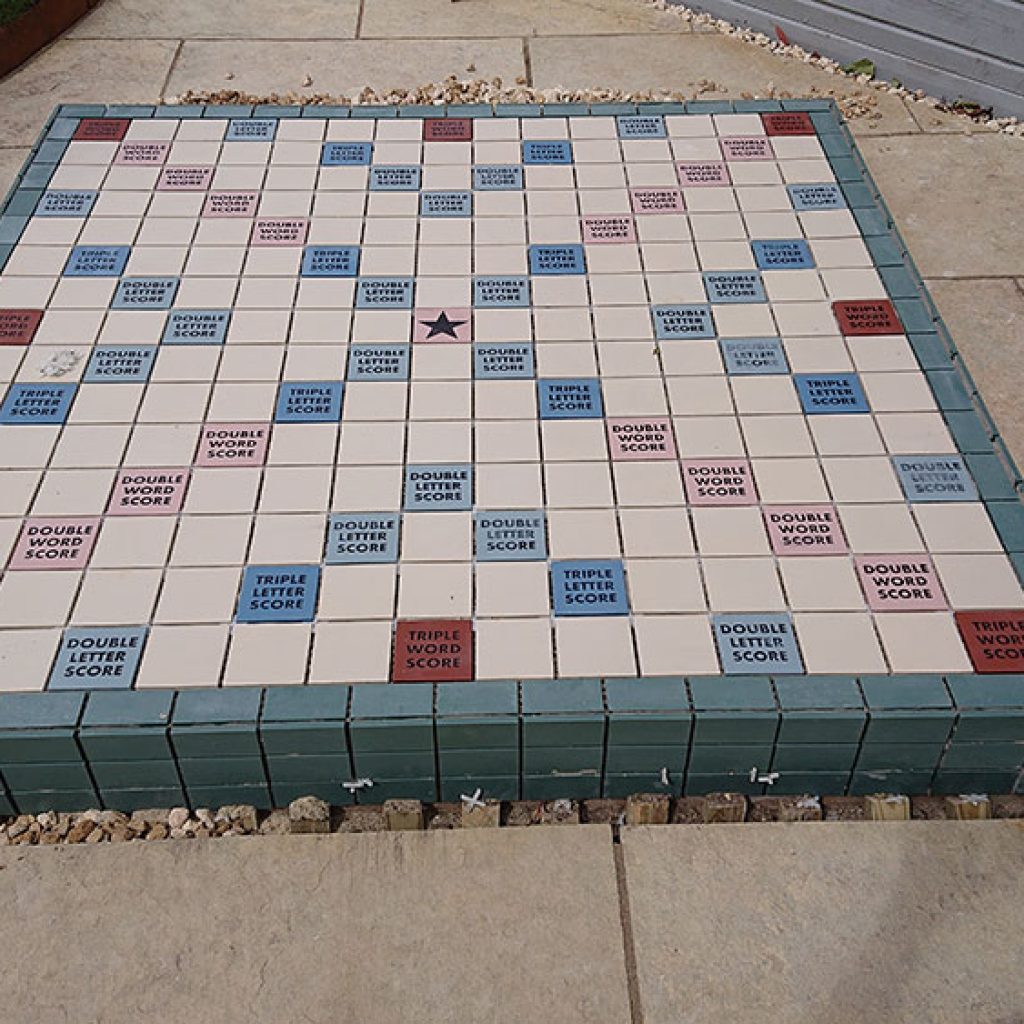
Not every surface in landscaping is horizontal. Wall cladding is quite fashionable at the moment. Tiles can be bespoke-made to suit every taste. I particularly enjoyed laying these – what a brilliant way to make a garden truly interactive!
Plumbing
It’s always handy to have a few basic plumbing skills when you are building water features, installing automatic irrigation systems, or fitting an outdoor kitchen. I’ll not pretend to be an expert though. I’ll always call in an expert for complex projects or anything that involves electicity.
Electrics
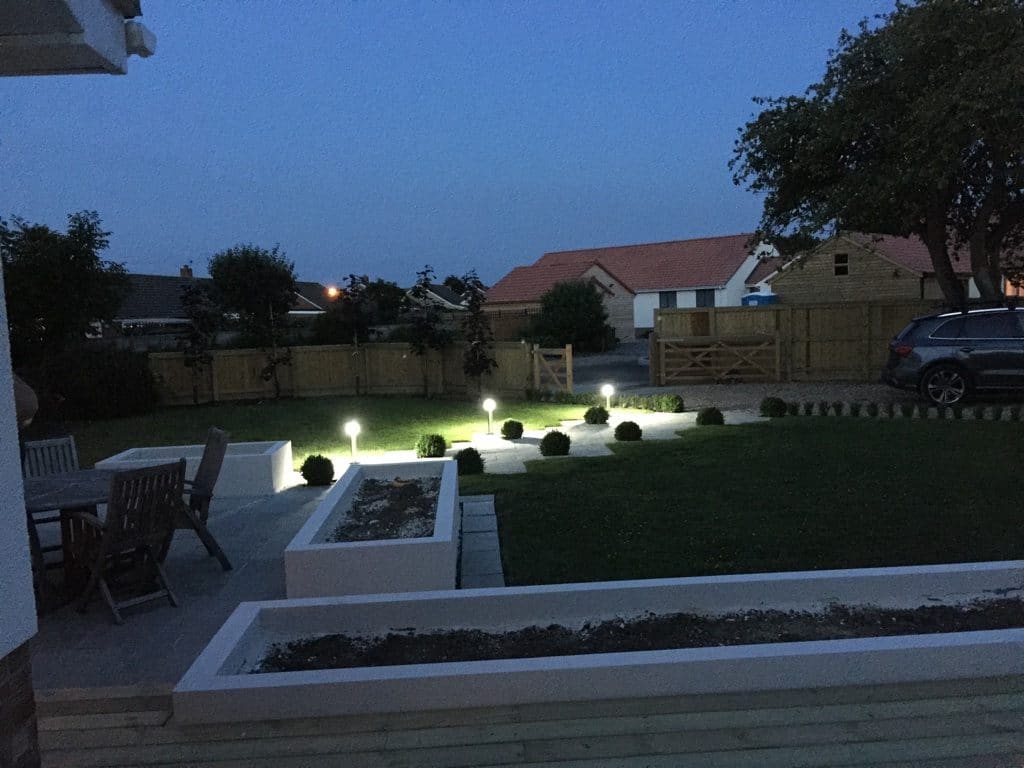
The law demands that a qualified electrician installs and checks all of the wiring in a garden makeover. And that’s exactly how it should be. After all what use is a garden if it’s dangerous? Electric cabling for garden lighting will often be planned at the garden design stage. And of course it will be considered before the hard landscaping is finished. Especially for things like inset lights. Ensuring that the right tradespeople are on site at the right time is all part of the project management aspect of landscaping.
Soil improvement
Understanding and improving the soil is key to any landscaping project. Some gardens have minimal planting. However, it’s not unusual for the homeowners to be bitten by the gardening bug and want to add more plants further down the line.
We’ve briefly touched on the importance of caring for soil structure throughout a project. But the whole idea of a garden makeover is to leave a space in better order than when we found it. So for turfing and planting we’ll do what we can to ensure that the soil is in the best possible condition.
Planting

The finishing touches! Once the planting is in, the garden truly begins to come alive. But there’s more to planting than digging a hole and plopping a plant in. It’s an old adage but knowing how to choose the right plant for the right place is key to sustainable landscaping. Get it wrong and you’ll be buying more plants a few months down the line.
Don’t forget those little extras – the ones that make a big difference. Staking trees, supporting plants, mulching and irrigation……all in a day’s work for a landscaper.
Turfing
Turfing is the easy bit of making a new lawn. Preparing the soil for turf – that’s another matter. Once again, having the correct machinery to hand helps. A rotovator, a good rake and a strong back are essential.
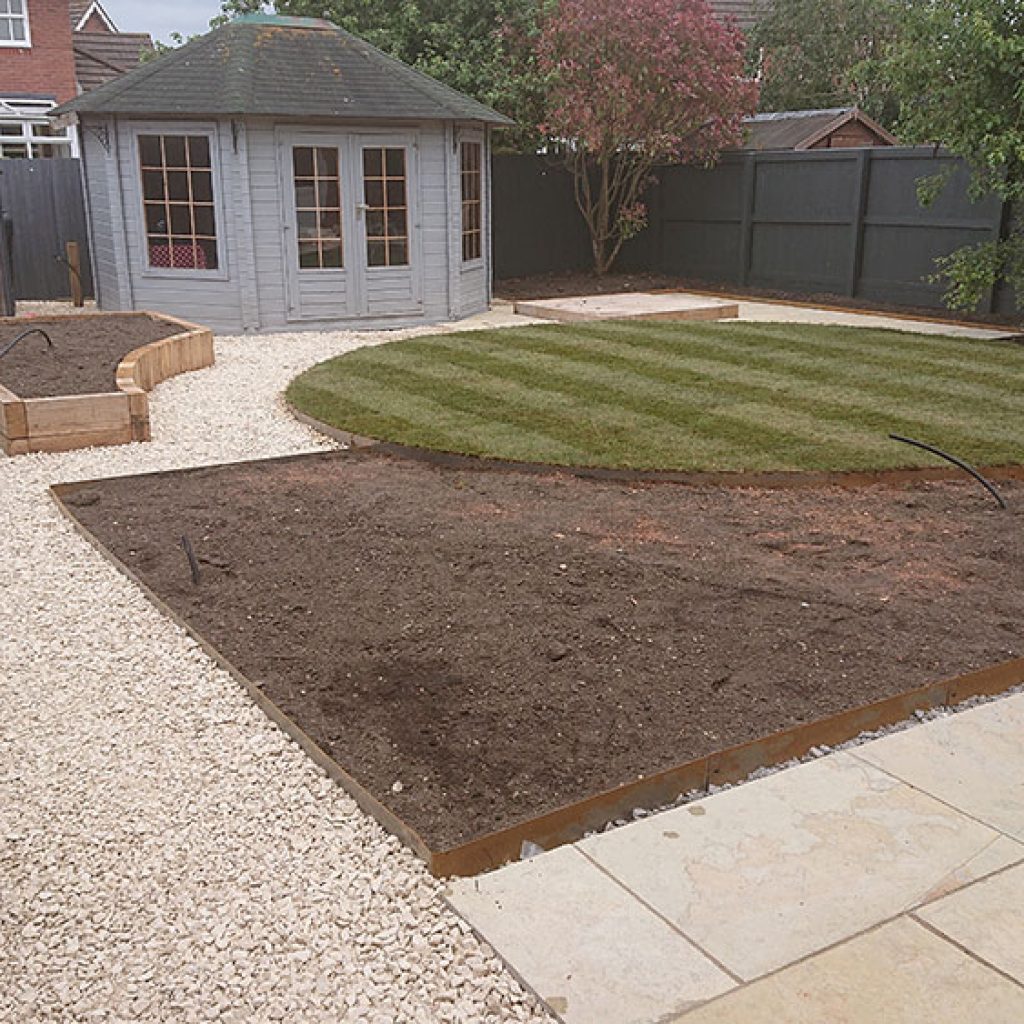
Laying turf flush to the lawn edging makes mowing easier – and neater.
Teaching
What’s that? A landscaper is also a teacher? Well sometimes – yes. None of us were born with our skillsets. We all learned from other, more experienced landscapers. And as a strong team, the Landscapers all help each other to figure out the best way of tackling a job.
We also teach clients how to care for their new gardens. What the plants need, when to mow the lawn, how to keep any timber in good order and anything else they need to know about their new garden.
Tidying
The mark of a good landscaper is always to tidy up properly and leave the site looking fabulous at the end of the job. Certainly the SilverBirch team won’t be leaving you with plant pots, bags of solid concrete or splodges of grout to clean up. Your new garden will be pristine and ready for you to enjoy.
If you’ve reached the end of the article – well done! I feels like it was quite a long one but I did want to share with you just some of the skills that the landscapers at SilverBirch have. Now you know what a landscaper does.
If you enjoyed this article…..
Visit our portfolio page to see how landscaping skills have transformed gardens in the Bridgewater Area
How will you know if a landscaper truly is a professional craftsman?




